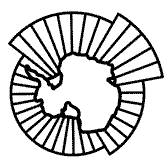Search results
-
CCAMLR’S 3-YEAR CHALLENGE: DELIVERING A COMPREHENSIVE AND REPRESENTATIVE PROTECTED AREAS NETWORK IN THE SOUTHERN OCEAN
Author(s): Submitted by ASOC Title: CCAMLR’S 3-YEAR CHALLENGE: DELIVERING A COMPREHENSIVE AND ...
Meeting Document : CCAMLR-XXVIII/BG/30 : Author(s): Submitted by ASOC
-
Climate change in the upper 2 000 m of the deep ocean
Author(s): Submitted by FAO Title: Climate change in the upper 2 000 m of the deep ocean ...
Meeting Document : CCAMLR-38/BG/51 : Author(s): Submitted by FAO
-
ANTARCTIC KRILL AND CLIMATE CHANGE
, and possible repercussions for resource management. The workshop was organised by the Institute of ... Marine Resources and Ecosystem Studies (IMARES) in the Netherlands, and funded by the European Commission ...
Meeting Document : WG-EMM-11/16 : Author(s): H. Flores (Netherlands), A.S. Atkinson (UK), E. Bravo Rebolledo (Netherlands), V. Cirelli (Argentina), J. Cuzin-Roudy (France), S. Fielding (UK), J.A. van Franeker (Netherlands), J.J. Groeneveld (Netherlands), M. Haraldsson (Sweden), S. Kawaguchi (Australia), B.A. Krafft (Norway), A. Lombana (USA), E. Marschoff (Argentina), B. Meyer (Germany), G. Milinevsky (Ukraine), S. Nicol (Australia), E.A. Pakhomov (Canada), A.P. Van de Putte (Belgium), C. Reiss (USA), E. Rombolá (Argentina), K. Schmidt (UK
-
Examination of the characteristics of the fishery for Dissostichus eleginoides in the CCAMLR Statistical Subarea 48.3 and its implications on estimating trends in catch per unit effort
and random in haul-by-haul catch and effort data from the longline fishery for Dissostichus ... soak time as a co-measure of effort by expressing CPUE as kg per hook-hour. In contrast the fitted log ...
Meeting Document : WG-FSA-SAM-05/17 : Author(s): A.J. Constable, S.G. Candy and B. Raymond (Australia)
-
Population dynamics of the wandering albatross Diomedea exulans at Marion Island: long-line fishing and environmental influences
influenced by both environmental and anthropogenic effects are described. The proportion of first-time ... supplementary food being made available by the initiation of a longline fishery for Patagonian toothfish ...
Meeting Document : WG-EMM-03/11 : Author(s): D.C. Nel, F. Taylor, P.G. Ryan and J. Cooper (South Africa)
-
An ecosystem-based approach to management: using individual behaviour to predict the indirect effects of Antarctic krill fisheries on penguin foraging
Abstract: 1. Changes in species’ abundance and distributions caused by human disturbances can ... predicted to cause stronger effects of krill fisheries than explained solely by the percentage of biomass ...
Meeting Document : WG-EMM-03/34 : Author(s): S.H. Alonzo, P.V. Switzer and M. Mangel (USA)
-
PENGUIN RESPONSES TO CLIMATE CHANGE IN THE SOUTHERN OCEAN
likely to respond by dispersal rather than adaptation. Ecosystem changes are potentially most important ... tolerance; species with low adaptability, particularly the ice-obligates, may therefore be more affected by ...
Meeting Document : WG-EMM-09/P09 : Author(s): J. Forcada and P.N. Trathan
-
PREDICTING SPECIES DISTRIBUTIONS FROM MUSEUM AND HERBARIUM RECORDS USING MULTI-RESPONSE MODELS FITTED WITH MULTIVARIATE ADAPTIVE REGRESSION SPLINES
methods for using these data. Such methods must, in particular, accommodate the difficulties caused by ... multiple species affect predictive performance, by evaluating predictions at completely independent sites ...
Meeting Document : WS-VME-09/P02 : Author(s): Elith, J., Leathwick, J.
-
LIFE HISTORY BUFFERING IN ANTARCTIC MAMMALS AND BIRDS AGAINST CHANGING PATTERNS OF CLIMATE AND ENVIRONMENTAL VARIATION
interannual variation in fitness. These species maximise fitness by keeping a low inter-annual variance in the ... flexible life histories that are more constrained by fluctuation in their critical habitats, like sea-ice ...
Meeting Document : WG-EMM-08/P05 : Author(s): J. Forcada, P.N. Trathan and E.J. Murphy
-
Foraging energetics of Antarctic fur seals in relation to changes in prey availability
seal foraging trips were twice as long in 1984 as in 1985 and total mass-specific energy expended by ... can increase their foraging effort by increasing the proportion of time spent foraging. This would ...
Meeting Document : SC-CAMLR-VIII/BG/13 : Author(s): Delegation of United Kingdom

